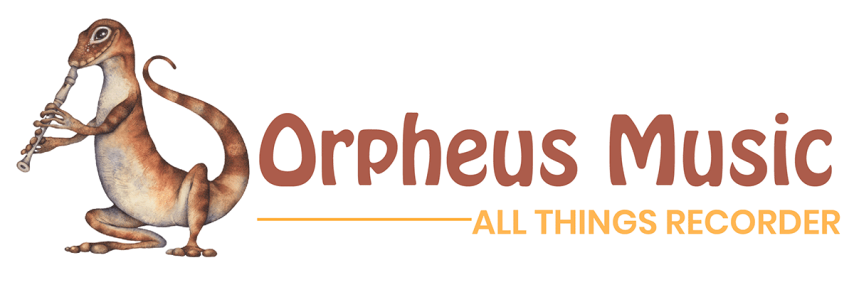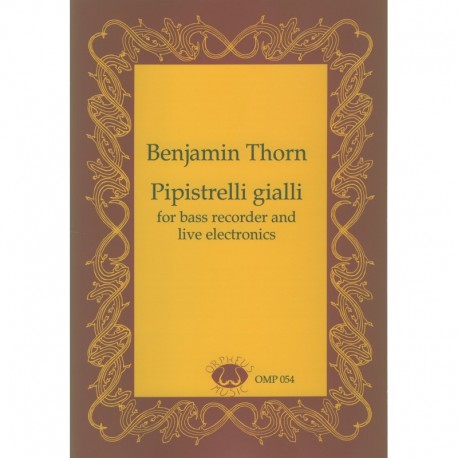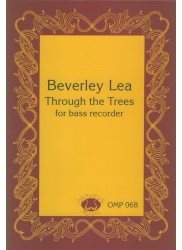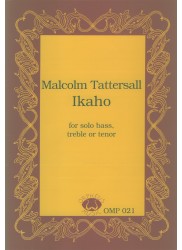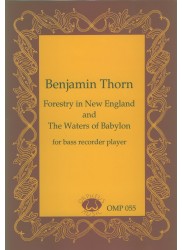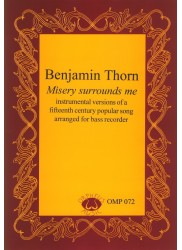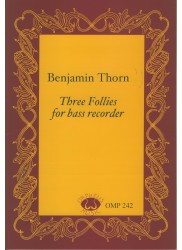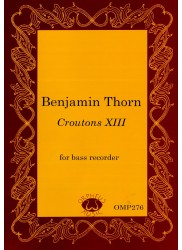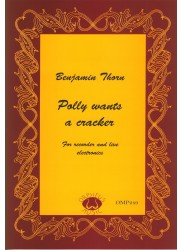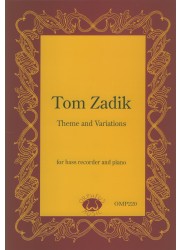No products
Prices are tax included
Pipistrelli gialli
OMP054.pdf
PLEASE NOTE - DOWNLOADABLE PDF VERSION
Composer: Thorn - Benjamin
Instrumentation: Bass + Live Electronics
Period/genre: Australian Contemporary
Grade: Very Difficult
More info
*Contemporary Piece.* Three exhilarating pieces using delay and electronic distortion that explore a wide range of timbres and subtle variations in texture.
Please note that due to the automated delivery of virtual products including pdf downloads, PayPal payment is required at the checkout - we are unable to accept the cheque payment method for these items.
_Score 10 pp. Downloadable PDF file - 236 Kb._
_Licentiate (LTCL) Recorder Repertoire List Trinity College London SYLLABUS_
https://orpheusmusic.com.au/bass/2257-pipistrelli-gialli.html?search_query=omp054&results=2OMP059 Nigel Butterley, The White-throated Warbler
OMP054 Benjamin Thorn, Pipistrelli Gialli
These new editions from Orpheus present two of the most important - some might even say classic - works in the history of modern Australian recorder music. Nigel Butterley's miniature The White-throated Warbler was written for Carl Dolmetsch back in 1965. The composer was inspired to create it when he heard Dolmetsch perform Couperin's Le Rossignol en Amour and was also influenced by the sound of a bird in his garden. It is described in the edition as a 12-tone work but Butterley's use of this method is not strict. Its trills, aperiodic rhythms, and repeated patterns, as well as its setting for the sopranino, are certainly evocative of birdsong, but its dissonant atonal language, very slow tempo, and sparse textures give a rather frozen, austere impression of a bird.
The White-throated Warbler was recorded in the 1970s by both Carl Dolmetsch and David Munrow. As a result of these recordings, it became the face of modern Australian recorder music to the world-at-large. This changed in the early 1990s when Benjamin Thorn's powerful bass composition The Voice of the Crocodile was published by Edition Moeck.
If Crocodile is Thorn's greatest piece, Pipistrelli gialli (Yellow Bats), written in 1985, is certainly his second greatest. Although in retrospect Thorn may not really have broken much new ground (what he did with live electronics is primitive compared to Michael Barker's experiments of the same period), he nevertheless created a powerful and memorable work that still sounds exciting and fresh today. In fact, the technology for which Pipistrelli was originally written - analog reel-to-reel tape delay - is completely outmoded. But the requirements can easily be met with modern digital equipment.
In the September 1993 issue of AR, I profiled Pipistrelli gialli in "On the Cutting Edge," describing it in detail after examining the manuscript and hearing a private tape recording of a performance by Mr Thorn. Since that issue of the magazine might not be readily available to most readers and especially since the written score rarely reflects the actual sound of the music (because of the electronic delay), I feel it appropriate to quote my earlier writing on the subject as follows:
"The first movement begins with a few widely spaced chattering sounds that quickly develop into a barrage of noises of ever-increasing intensity. More pronounced wilder calls emerge out of the general confusion, these also increasing in frequency and character from sustained multiphonics to screeches and screams. Quite dramatically, the music suddenly stops and a brief, purely acoustic interlude - quite shocking in its simplicity ? is heard. The wild confusion returns in moderation as all dies down to nothing.
"In the second movement we are given a simple ternary form, consisting of electronic collages, of multiphonics at the beginning and end and a quiet acoustical monophonic solo in the middle. The third movement is arc-like, featuring ghostly wails at the beginning and end, with a midsection that alternates wild electronic jumbles of sound with intense acoustic solos."
The most important development in Australian recorder music since the emergence of Benjamin Thorn as a Major talent has been the establishment of Orpheus Music. Like many small and regionally-oriented publishers that came into being in the 1990s, Orpheus has flooded the market, and its record of quality control has not been consistent. But with these particular editions, Orpheus has made a valuable contribution by offering two excellent compositions that are also historically important. Both editions are beautifully printed and contain no bad page turns. Warbler has a brief biographical note on the composer, and Pipistelli has a single page of suitable and to-the-point instructions. Both works will be of interest primarily to professionals.
Pete Rose, American Recorder, March 2003
15 other products in the same category:
Reference: OMP068
Brand: Orpheus Music
Through the trees
Composer: Lea - Beverley Instrumentation: Bass Period/genre: Australian...
In StockReference: OMP068.pdf
Brand: Orpheus Music
Through the trees
PLEASE NOTE - DOWNLOADABLE PDF VERSION Composer: Lea - Beverley...
$13.00 -20%In StockReference: OMP021
Brand: Orpheus Music
Ikaho
Composer: Tattersall - Malcolm Instrumentation: Tenor - Bass Period/genre:...
In StockReference: OMP021.pdf
Brand: Orpheus Music
Ikaho
PLEASE NOTE - DOWNLOADABLE PDF VERSION Composer: Tattersall - Malcolm...
$14.50 -20%In StockReference: OMP055
Brand: Orpheus Music
Forestry New England, The Waters of Babylon
Composer: Thorn - Benjamin Instrumentation: Bass Period/genre: Australian...
In StockReference: OMP055.pdf
Brand: Orpheus Music
Forestry New England, The Waters of Babylon
PLEASE NOTE - DOWNLOADABLE PDF VERSION Composer: Thorn - Benjamin...
$14.50 -20%In StockReference: OMP072
Brand: Orpheus Music
Misery surrounds me
Composer: Thorn - Benjamin Instrumentation: Bass Period/genre: Baroque...
In StockReference: OMP072.pdf
Brand: Orpheus Music
Misery surrounds me
PLEASE NOTE - DOWNLOADABLE PDF VERSION Composer: Thorn - Benjamin...
$13.00 -20%In StockReference: OMP242
Brand: Orpheus Music
Three Follies for Bass Recorder
Composer: Thorn - Benjamin Instrumentation: Bass Period/genre: Australian...
In StockReference: OMP242.pdf
Brand: Orpheus Music
Three Follies for Bass Recorder
PLEASE NOTE - DOWNLOADABLE PDF VERSION Composer: Thorn - Benjamin...
$14.50 -20%In StockReference: OMP054
Brand: Orpheus Music
Pipistrelli gialli
Composer: Thorn - Benjamin Instrumentation: Bass + Live Electronics...
In StockReference: OMP276
Brand: Orpheus Music
Croutons XIII
Composer: Thorn - Benjamin Instrumentation: Bass Period/genre: Australian...
In StockReference: OMP276.pdf
Brand: Orpheus Music
Croutons XIII
PLEASE NOTE - DOWNLOADABLE PDF VERSION Composer: Thorn - Benjamin...
$13.00 -20%In StockReference: OMP249
Brand: Orpheus Music
Polly wants a cracker
Composer: Thorn - Benjamin Instrumentation: Recorders + Live Electronics...
In StockReference: OMP220
Brand: Orpheus Music
Theme & Variations
Composer: Zadik - Tom Instrumentation: Bass + Piano Period/genre:...
In Stock
